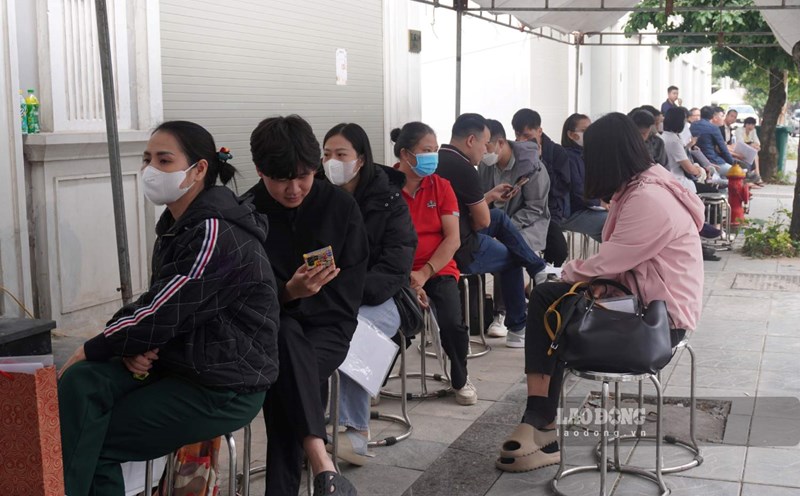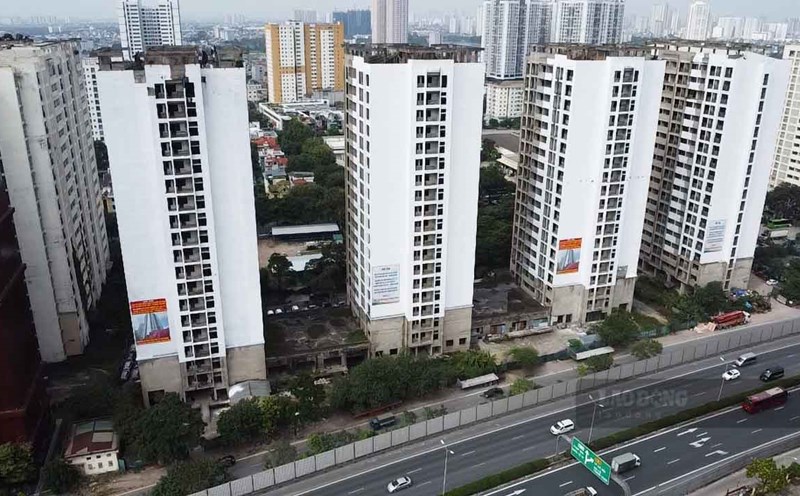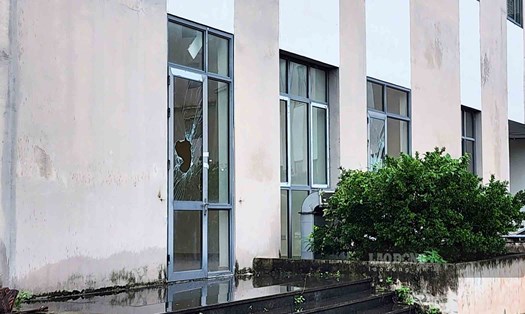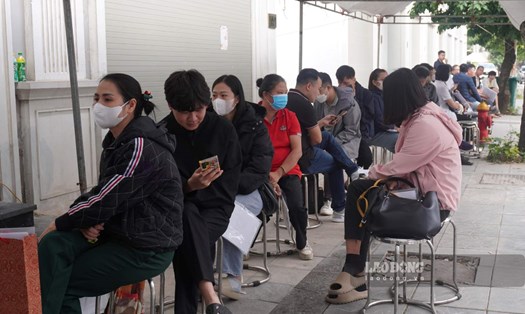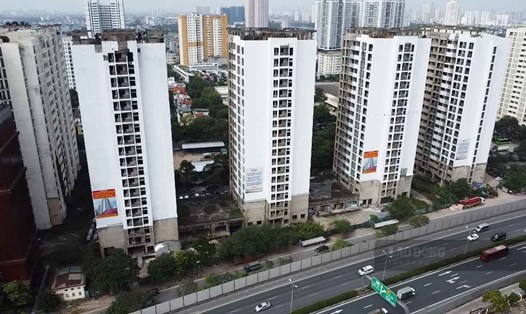On October 31, Lao Dong Newspaper reporters recorded that in Duong Noi urban area (Hanoi city), many townhouses and villas here are abandoned and uninhabited.
Posing as someone who wanted to buy a house, the reporter contacted the phone number posted on a house in the above urban area. The listener introduces himself as a real estate broker.
According to this broker, houses located on the inner road of Duong Noi urban area have prices ranging from 38 - 42 billion VND/unit, depending on the location. Meanwhile, the main road apartments cost from 65 - 80 billion VND/apartment. Currently, most of the houses here have been granted Certificates of land use rights, house ownership rights and other assets attached to land (commonly known as "pink books" - PV).
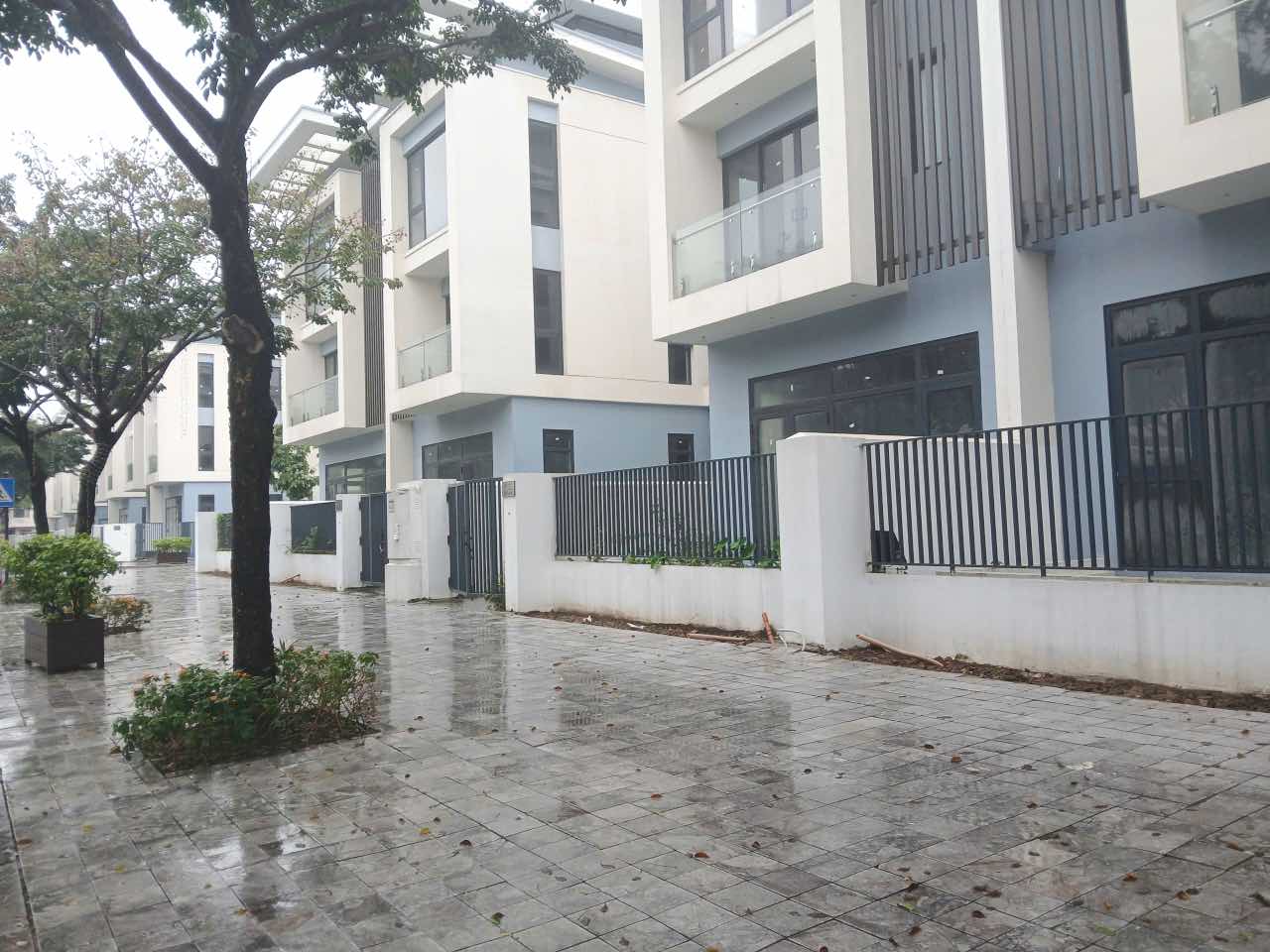
Regarding the above issue, Dr. Tran Xuan Luong - Deputy Director of the Vietnam Institute for Real Estate Market Research - commented that most of the abandoned houses are "Spedic buyers, not for living. They do not need to live and do not want to sell, leading to the scene of urban areas becoming deserted".
Dr. Tran Xuan Luong shared that this is a manifestation of rich and poor decentralization and clear social stratification, of course the gap between housing prices and income is also a major barrier. Meanwhile, the average income of workers in Hanoi is only about 10 - 15 million VND/month. Access to affordable housing has therefore become even more remote, leading to a situation of " giving high-end housing to the rich, lacking affordable housing for middle-income people, and housing for low-income people".
Deputy Director of the Vietnam Institute for Real Estate Market Research Tran Xuan Luong proposed that society often divides into 3 typical income levels such as "High-income people; Average-income people; Low-income people". Therefore, it is necessary to study the provision of 3 types of housing corresponding to the income of workers.
Dr. Tran Xuan Luong also added that abandoned urban areas not only cause great waste of land resources, but also lead to many consequences for society and urban landscape, especially the loose security situation that makes the city's face shabby.
To overcome this situation, Dr. Tran Xuan Luong said that local authorities need to review all urban area projects that have been and are being implemented, and re-evaluate the efficiency of land use. Projects that are slow to be implemented or abandoned need to have their planning adjusted, or even revoked if the investor is not qualified enough. In addition, it is necessary to focus on developing social housing and low-cost commercial housing, while investing heavily in transport infrastructure connecting the center and suburbs. When the infrastructure system is synchronized, prices are reasonable and there are full amenities, new urban areas will become truly livable places.
Dr. Tran Xuan Luong shared that urban areas cannot only have houses and roads. There needs to be adequate technical infrastructure and social infrastructure, the important thing is to have people to live in, have life, have coexistence, and community. If only built without taking into account living factors, the urban area will forever be just cold concrete blocks in the heart of the city.
The key to the hollow urbanization problem is probably not the construction of many new areas, but the way local authorities review planning, land funds, effective use of land funds, land data, tax policies, etc., synchronously invest in infrastructure and reserve resources to meet the real needs of the people. At that time, the houses that are currently "forgotten" in urban areas need to be put into use or truly become a home, instead of just an "unfinished dream" of urbanization," said Dr. Tran Xuan Luong.


